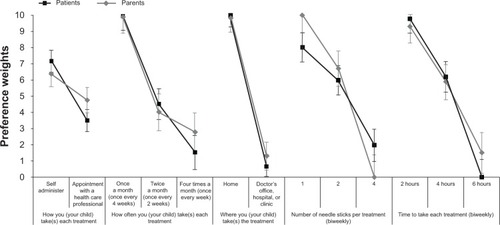Figures & data
Table 1 Respondent demographics
Table 2 Respondents experiencing immunoglobulin-related injection site reactions and headaches and the impact and importance of reducing these adverse events
Figure 1 Health of patients with primary immunodeficiency disease by country and route of immunoglobulin administration (visual analog scale).a
Abbreviations: Ig, immunoglobulin; IV, intravenous; SC, subcutaneous; EQ-5D, EuroQoL 5 Dimensions.

Figure 2 12-Item Short Form Health Survey physical and mental norm-baseda summary and component scores for patients with primary immunodeficiency diseases treated with immunoglobulin.


